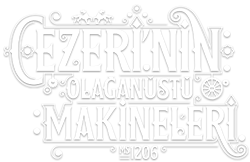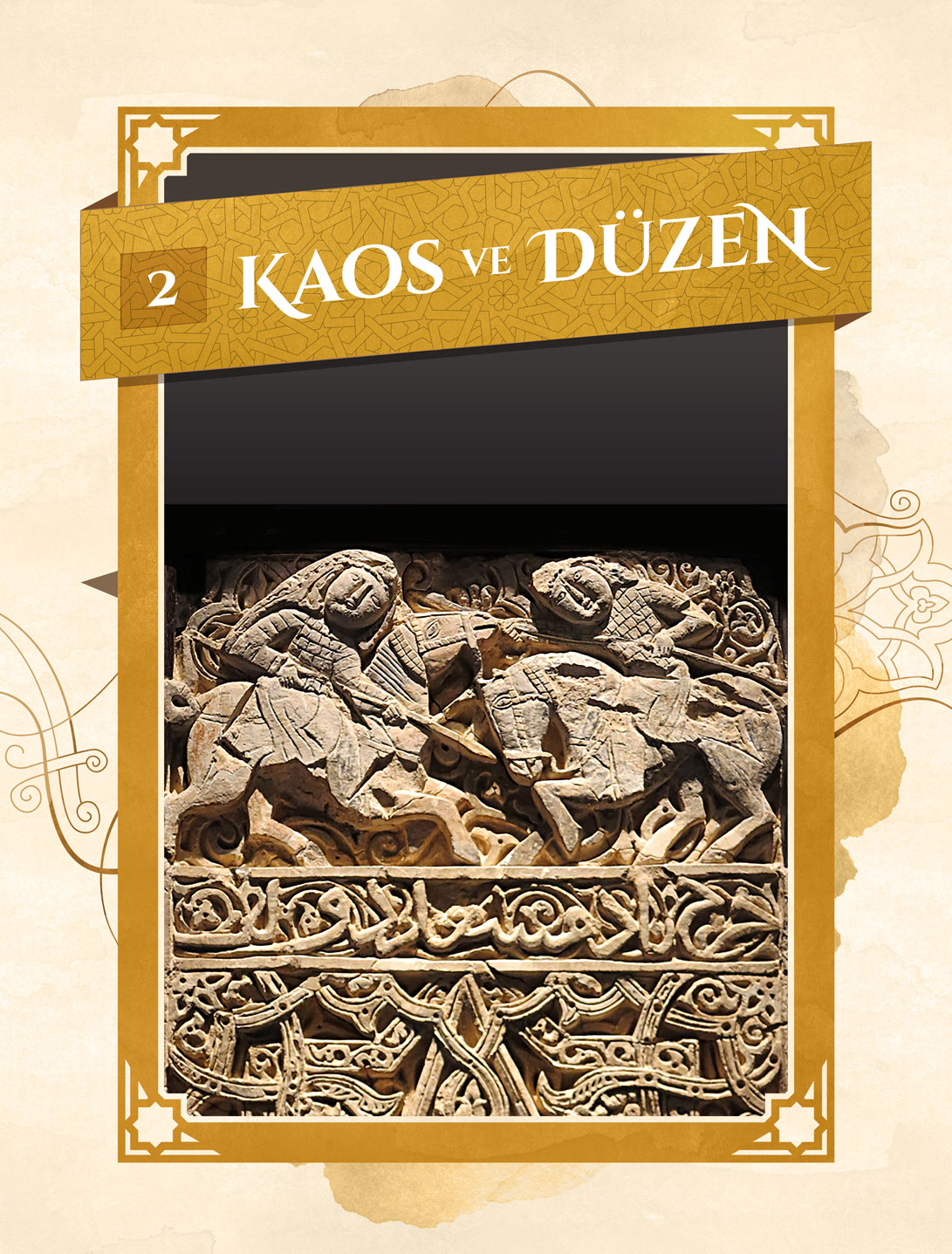During the 12th and 13th Centuries, Anatolia was the arena where many political bodies fought for the power. The Byzantine raids to stop the advance of Turks, Crusades for Jerusalem, the rivalry between Saladin and the Seljuk, never ending clashes for dominion, fallen cities, rising lordships, frequently conquered castles… And a civilization that lived for almost four hundred years in the middle of this chaos – the Artuqids. A country fighting for survival on one side, and moving forward in science and art to create a future.
Jazari was a court engineer who served 3 consequent sultans in the Artuqid’s Hisn Kayfā branch in Diyarbakir. During that chaotic period when the Artuqid tried to keep a political balance between the Seljuk and the Ayyubid, Jazari was the most important figure of the renaissance that rose in Diyarbakir and Mardin area.
Political Situation of the Artuqid Period
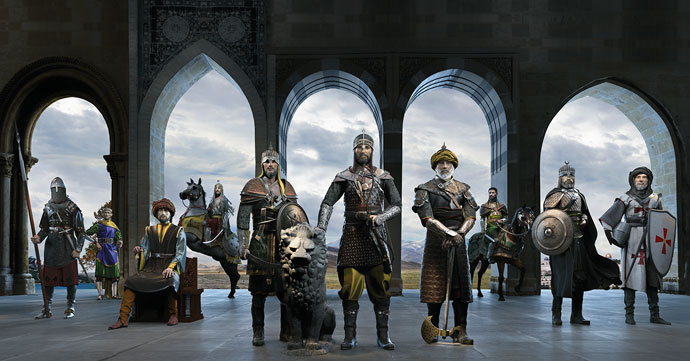
Artuqids had settled in a dynamic location in the heart of Jazeera. Ayyubids on one side, and Anatolian Seljuks on the other, they were in the middle of a continuous move back and forth between clashes and alliances. On the other hand, they were always in conflict with the forces of the Crusaders and the Byzantine. Despite they were in the middle of a life that was full of ever-changing alliances, conquered and lost cities, they made lots of futuristic contributions to the art, science and architecture in Anatolia. The Artuqid, who were dominant in Eastern and Southeastern Anatolia between 12th and 15th centuries in three branches – Hisn Kayfā (1102-1232), Mardin (1106-1409), and Harpoot (1112-1124 and 1185-1233) – left some extraordinary mark in the history during a time of chaos in Anatolia. What made them so extraordinary was the fact that they ruled for around three hundred years among other giants, like Great Seljuks, Anatolian Seljuks, Syrian Seljuks, Byzantines, Crusader earldoms, the Fatimid, the Zenghid, the Ayyubid, the Mamluk, and finally Mongolians, who were always in conflict with each other, and who were politically and militarily much superior to them.
Sultan Alp Arslān

The second and most legendary ruler of the Great Seljuk Empire, Sultan Alp Arslān was the son of one of the founders Cagri Beg. Under his rule, the Seljuk always looked at the west. The conquer of Ani Fortress in 1064, which was a castle deemed as unsurmountable, was a great turning point, and Caliph Kaim-Biamrillā called Sultan Alp Arslān as “Abu al-Fāth” (father of the conquers). Clearly, the fourth Anatolian campaign started by Byzantine Emperor Romanus Dioegenes, who aimed to stop and kick the Turks out of Anatolia, would bring a devastating clash between the Byzantine and the Seljuk. Indeed, the Seljuk won a crushing victory against the Byzantine in Manzikert Battle on August 26, 1071, gaining a solid foothold in Anatolia. In September 1072, Sultan Alp Arslān started a Turkistan campaign with a great army. However, Yusuf Harazmī, commander of the Berzem Castle of the Kharakanid stabbed him with his dagger when he was accepted to the throne room, and Alp Arslān died four days later.
Romanus Diogenes

Romanus Diogenes, a member of the prominent Cappadocian Diogenii family, was a powerful commander who achieved great things with the Byzantine army. However, he was condemned to death for his part in a coup against the sons of Constantinus Ducas X in 1067. Waiting for the date of execution, he was pardoned by the Viceroy Eudocia, and she married him on January 1st, 1068, becoming Romanus Diogenes IV, and the dual emperor with Mikhail VII. Afterwards, he carried on campaigns against the Turks over Anatolia for four times, failing each time. During his last campaign against the Turks, Diogenes was caught as a prisoner as a result of his battle against Seljuk Sultan Alp Arslān at Manzikert Plains on August 26th, 1071. When he was set free, and on his way back home, he found out about his dethroning, and despite the two battles against the army from Constantinople, he lost his crown. As a punishment, he was blinded on June 29th, 1072, and exiled to Princes’ Islands (Kinaliada), where he died of the inflammation of his eye wounds.
Kaykaus I

The eldest son of Kaykhusraw I, Kaykaus was crowned in 1211 after the demise of his father, and he fought against the Byzantine, Armenians, Ayyubids, and Artuqids for his entire life. He conquered Sinope, the most important commercial port on Blacksea (1214), took back the equally important port on Mediterranean, Antalya (1216), imposed tariffs on Armenian and Tirebizond kingdoms, which empowered Anatolian Seljuks all around the area. With an emphasize on art, science, and education, the rule built the Sivas Bimaristan in 1217, which was one of the greatest medical education center for Anatolian Seljuks. He died in 1220.
Artuk Beg
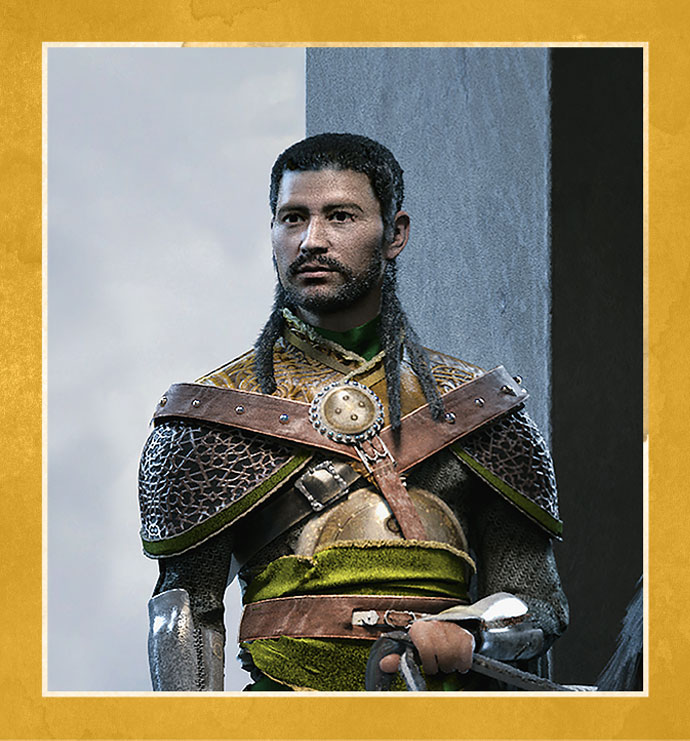
A member of Doger, Oghuz Turks, Artuk Beg joined Sultan Alp Arslān in 1063, and fought in Manzikert Battle, too. When the Byzantine didn’t follow the agreement after the war, Sultan Alp Arslān ordered his commanders to conquer Anatolia permanently. One of these commanders was Artuk ibn Eksuk, whose sons would start the Artuqids. Artuk Beg, following his orders from Alp Arslān, and starting an unprecedented campaign in Anatolia, conquering Yesilirmak and Kizilirmak territories first, and crossing the Sakarya River afterwards, reached Izmit. However, upon the demise of Sultan Alp Arslān, and the claim over the throne made by his brother Qarā Arslān Kavurd Beg, following an advice by Nizam al-Mulk, he was called back to the capitol by the Seljuk Sultan Malik-Shah I. He played an important role against the threat by Kavurd Beg. Artuk Beg, described as “a very rare commander” in the historical records of the era, was such a strong and dedicated Turkish warrior that he was mentioned even in Danishmendname, which was one of the early Turkish-Islam sagas. When he was ordered to serve in the army sent by Sultan Malik-Shah I to attack Mervanids around Diyarbakir, Artuk Beg found himself in a conflict with the Commander Fahruddevle, which caused him to alienate the Sultan. Ending up as a rebel, he began to serve Sultan’s brother, Seljuk Emir of Damascus, Tutush. And in return of his help against main Seljuk Court, Tutush appointed him as the Governor of Jerusalem. After the demise of Artuk Beg in 1091, his sons Soqman and Ilghazi became his successors.
Saladin
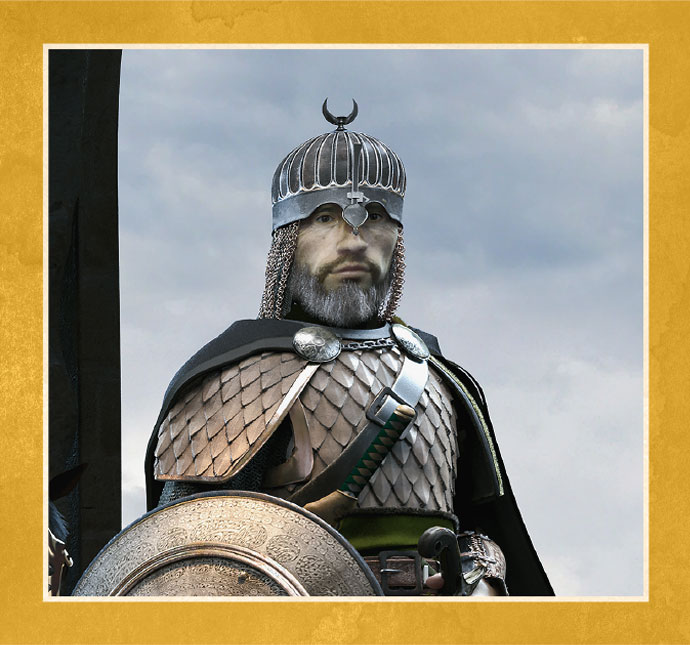
He was born in 1138, Tikrit, as the son of Seljuk Governor Nejm ad-Dīn Ayyub. Raised as a prince due to his father’s position and connections, Saladdin took part in the campaign against the Crusaders from a very early age. After the demise of his uncle Nūr ad-Dīn Zenghī, he became the commander of his army in Egypt, and also the vizier to the Fatimid caliph. With the approval of Nūr ad-Dīn Zenghī, Saladin began to rule Egypt and surrounding areas. After the demise of Zenghī, he became the ruler himself. Clashing with the Crusaders here and there, finally he fought against them in an open battle in Hittin, and won a great victory (1187). After that, he started a fast campaign, and conquered many castles in the area, including Akka, Tiberia, Askhalan, Nablus, Remle, and Gaza in Palestine. Adding fifty two more cities to that, he finally took Jerusalem from the Crusaders on October 2nd, 1187. He died in 1193 as one of the most legendary commanders in the history.
Nūr al-Dīn Muhammad
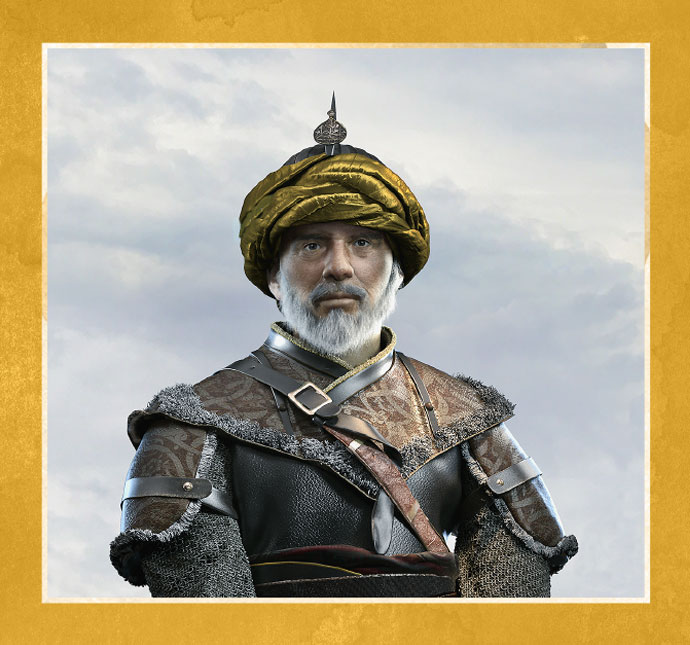
When the Artuqid ruler Qarā Arslan died in 1167, his son Nūr al-Dīn Muhammad replaced him. During his time, Anatolian Seljuks and Ayyubids were becoming more and more powerful around the area, and forced the smaller kingdoms in the area to bow to them. Having good relations with Anatolian Seljuks, and married to the daughter of Anatolian Seljuk ruler Kilij Arslān, Nūr al-Dīn Muhammad was forced to become closer to the Ayyubids due to his marital problems that eventually became diplomatic troubles. At that point, he showed his allegiance to Saladin, and joined his battles in Baysan (1183) and Kerek (1184). He also joined Mosul and Diyarbakir sieges with Saladin again. Upon the conquer of Diyarbakir, Saladin gave this city to Nūr al-Dīn Muhammad as a reward for his services (1183). Nūr al-Dīn Muhammad died in 1185.
Qutb al-Dīn Soqman II
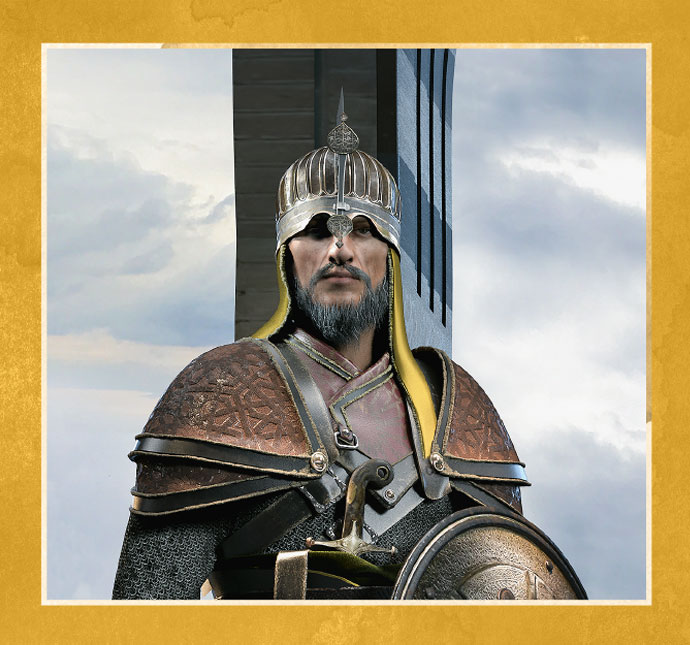
After his father Nūr al-Dīn Soqman, Qutb al-Dīn Soqman II bowed to Saladin like his father. However, after his demise, he began to make attempts to expand the dominion of Artuqids (1193). However, when he lost his life, falling from the roof of his palace in Hisn Kayfā (1200), it was a serious trouble. Before his demise, Soqman hadn’t shown his son as his successor, but his beloved slave Ayaz. However, since the prominent commanders didn’t accept him as the new ruler, Ayaz was dethroned and Nāsir al-Dīn Mahmud was crowned instead.
Nāsir al-Dīn Mahmud

After the demise of his big brother Soqman II, Nāsir al-Dīn Mahmud became the ruler. During the campaign in 1206, which was originally planned against the Georgians, but then changed the target to Agnaz Fortress under the rule of Crusaders, he sent his vizier to represent him. In 1208, though, he joined Sincar campaign himself. However, this campaign wasn’t completed due to the request of caliph and the alliance between Anatolian Seljuk Ruler Kaykhusraw I and Erbil ruler against the Ayyubids. Still, Nāsir al-Dīn Mahmud managed to gain Ayyubid ruler al-Maliq al-Adil’s favor. Hisn Kayfā Artuqids remained loyal to Ayyubids until 1218. In that year, Hisn Kayfā Artuqids were against the Ayyubids, but when Kaykaus was defeated, Nāsir al-Dīn Mahmud was quick to join back with the Ayyubids. Not only he was pardoned, but also he was rewarded with Hani and Cebelcūr, including Dara that was under the rule of another Artuqid dynasty. Nāsir al-Dīn Mahmud, an avid lover and supporter of art, science, technology and commerce in his time, died in 1222.
Artuqid Palace
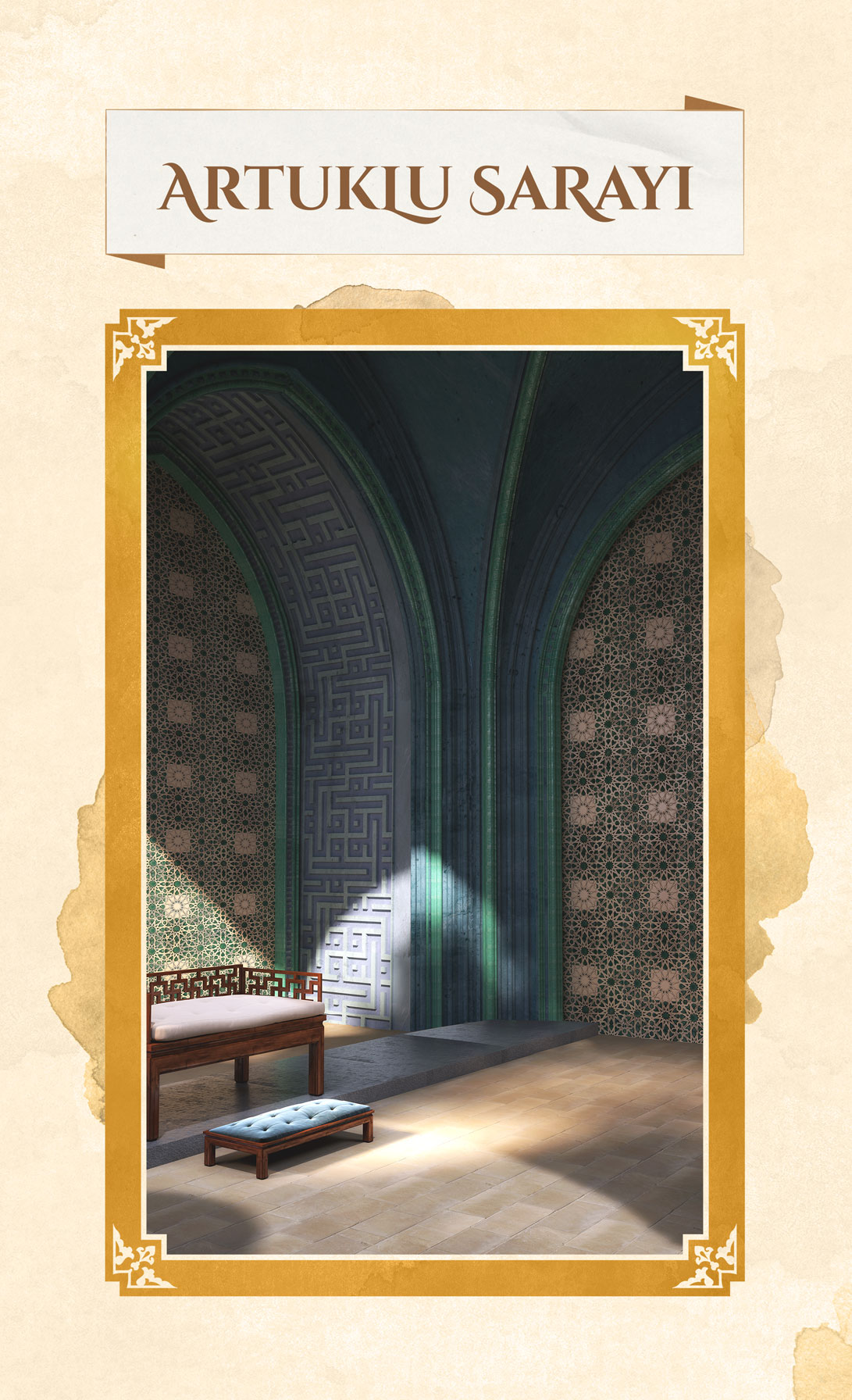
Artuqid Palace is the structure that rises on the hill in modern İckale of Diyarbakir today, which was conquered with the help of Saladin by the Artuqids who reigned in the area in 12th-15th Centuries. It’s where the Diyarbakir walls join. The main body of the palace, which was built by Nasīr al-Dīn Muhammad, is buried in the dirt today, and only a small part of it was excavated in 1960’s. During the excavations that started again in summer 2018, new discoveries were made regarding this structure.
In addition to many decorative and artistic elements in the structure, it’s believed to have had private gardens, pools, and fountains, including human figure relieves and paintings. Despite the fact that many more Artuqid wall ruins were found in Mardin, Hisn Kayfā, and Palu, the main palace was the one in Diyarbakir. This structure that was used as a prison during the time of Ottomans in 16th Century was lost under the mound that is known as Virantepe today.
Partial excavation work was made by Ottoman archeologist Oktay Aslanapa in 1961. During the excavations, a part of the palace garden and the clear characteristics of Turkish baths were preserved carefully. Colored stone and glass mosaic decorations in Turkish architecture were seen here for the first time. These are geometrical samples with fish and duck figures looking at each other. Also square ceramic works were found with black two headed eagle arms under turquoise glaze. Pieces of ceramics colored in blue, green, navy blue, purple and white were also found.
Sultan Tugrul with an Oath Cup, and Courtiers Relief
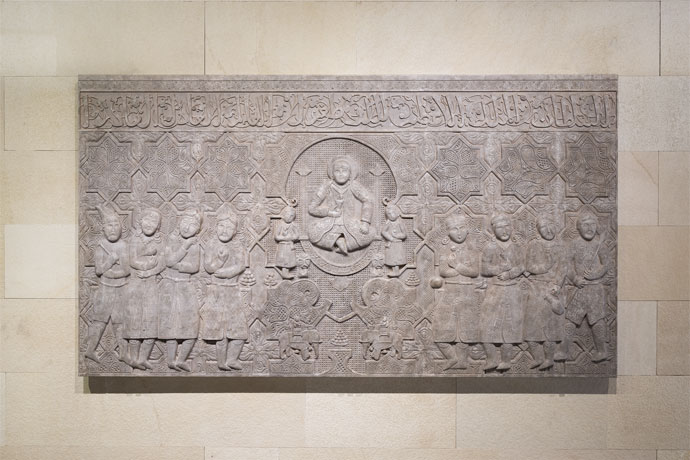
TAG
Iran, near city of Rey, second half of 12th Century
Original dimensions:
172 x 323 cm
Location of Original Relief:
Philadelphia Art Museum
Translation of Upper Calligraphy:
Sultan, Maliq, Great, Khan, Tugrul, Wise, Just, Mighty
Below the Sitting Figure:
Sultan, Victorious, Just
This panel that was found in Iran Plateau, north of ancient city of Rey, probably came from a structure belonged to the palace. In Great Seljuk Empire, Rey was held in high regards, and was used as a settlement by many sultans. The first figure that takes our attention in the panel is the sultan. He was mentioned as Tugrul Beg. He is shown with his consultants, commanders, and courtiers on his left and right. The objects held by the figures symbolize their positions. Such panels were used in government buildings as the description of absolute power. This panel was discovered in pieces during the excavations, and is to be restored several times eventually. This replica is recreated by Istanbul Jazari Museum, trying to stick with the original.
Sources: Sheila R. Canby, Deniz Beyazit, Martina Rugiadi and A.C.S. Peacock, Court and Cosmos, The Great Age of the Seljuks, The Metropolitan Museum of Art, New York, 2016, s. 76-77.
Seljuk Star Stucco Panel
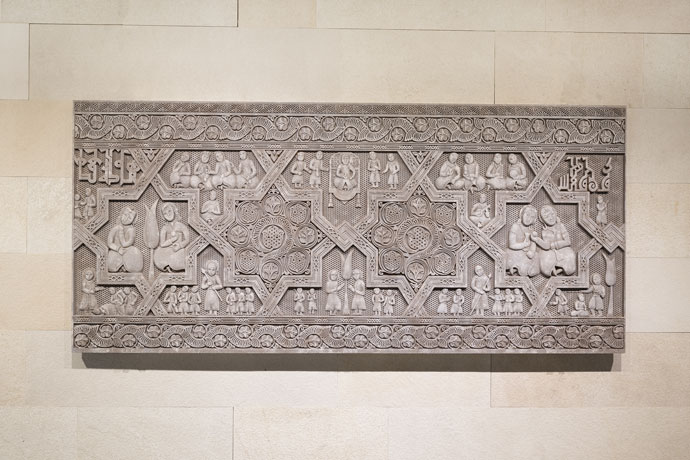
TAG
Iran, 12th Century
Original Dimensions:
152 x 344 cm
Location of Original Panel:
M. & R. Stora, Paris
Rectangular panel is made of four deep carved large octagonal stars bordered with dual narrow strips. Two of them have various pallets. Other two are entwined with a large figure scene. A prince on his throne and his courtiers are surrounded by a kufi calligraphy, and other smaller scenes are shown around it. Inside the star on the left, one of the two figures sitting under a cypress tree wears a tiraz stripped dress. Inside the one on the right, there are two sitting figures. Along the lower and upper strips, under the kufi calligraphy, a one legged figure with a mace, four sitting figures, and other figures sitting, singing, playing tambourines and eating - three musicians playing a harp, a violin, and a tambourine, and two figures listening to them. There is a single figure right under the kufi calligraphy, which seems like an important official. Two standing figures next to a cypress, two hawks, officials, and another hawk carrying a rabbit are also visible.
Source: https://www.christies.com/lotfinder/Lot/a-monumental-royal-seljuk-carved-stucco-panel-5358694-details.aspx
Artuqid Palace Gate
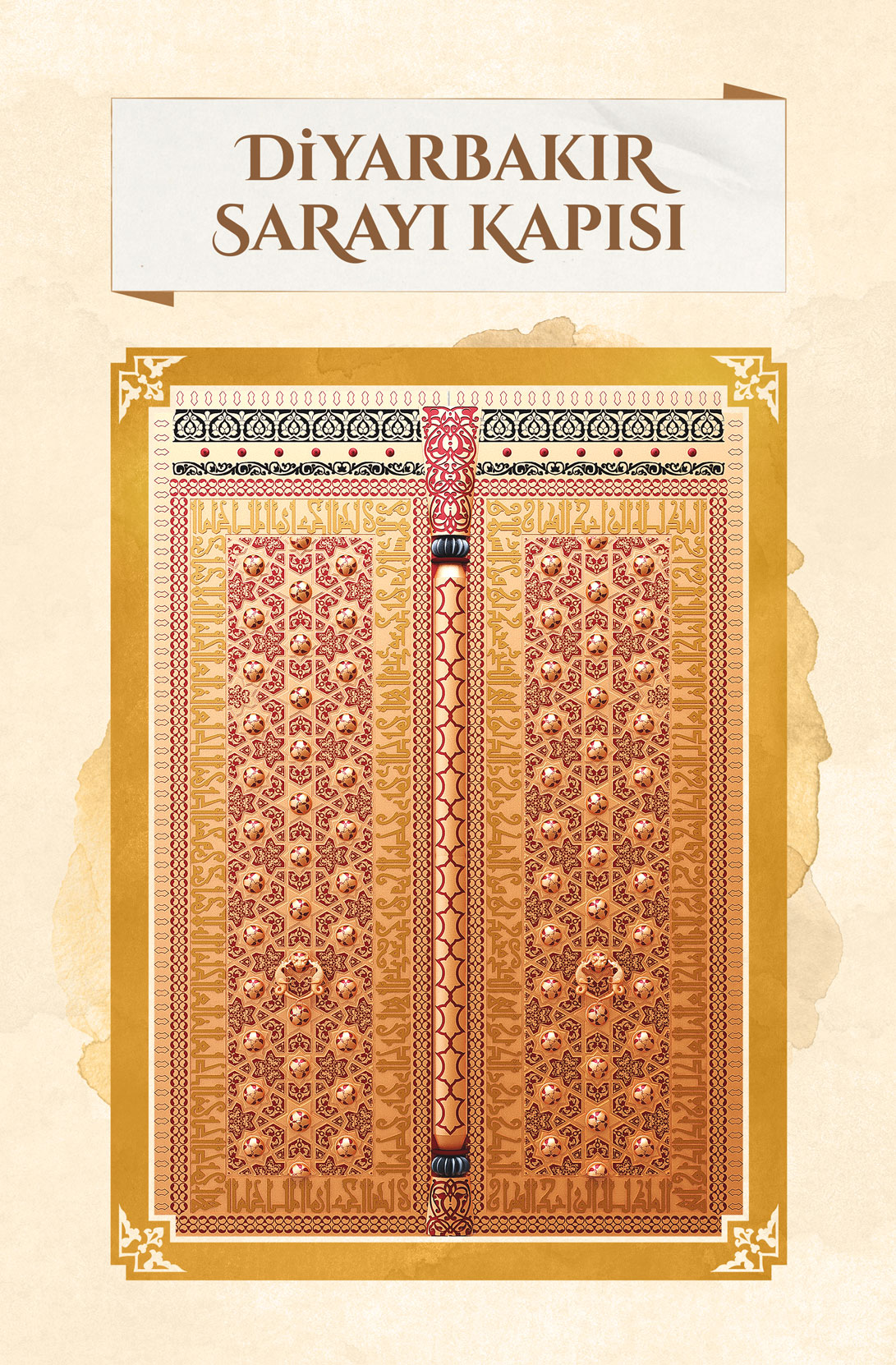
Other than his mechanical systems, this gate that shows his knowledge of materials and sense of art was built for the Artuqid palace in Diyarbakir. Jazari mentions in his book that travelers change their routes to see this gate, which is a real masterpiece. With the techniques of iron casting and processing, the technological superiority for its own time is evident. Historians say such methods were seen in Europe only in 16th Century, and there are no earlier examples of these methods before the time of Jazari.
The gate is around 4.5 meter high, and it has two wings. As seen in Jazari’s drawings, there is a 3 meter-high panel on the center of each wing, and it’s ornamented with famous octagrams and hexagrams of Islamic art, with convex domes inside them, made with the embossment and engraving methods. Among the star-domes are used pieces processed with same methods. However, these decorated domes and other connecting pieces weren’t shown in the original drawing in the book, but shown in individual images. On the sides and above of this part are written “Mulk, Vâhid, and Kahhâr olan Allah’ındır” which means “Belongs to God, who is Glorious, Only, and Omnipotent” in the geometrical and angular calligraphy style named Kufi. Patterns in lines surround this statement. The bini (middle slat) part between the wings is beautifully decorated, too. Some of these ornaments in Islamic art are the first examples of Gothic artistic style that would become very popular in Europe much later on. All the patterns were made on copper plates, and these plates were mounted on a wooden door wing. Other than handmade engravings, some parts cast out of bronze with hollowed patterns, and these holes were filled with cast copper, ending up with a mesmerizing appearance.
As far we know, the design between the wings is a composition seen for the first time in Jazari’s works, and based on a geometric formula.
This replica – differently than its original – was made of wood with a 75% scale, and video mapping was applied to show its geometrical shape in its central design.
Mardin Grand Mosque Kelime-i Tevhid Panel

An example for Artuqid Period architecture, and the symbol of Mardin with its sliced dome and minaret, Mardin Grand Mosque was built with two minarets, according to the records. The calligraphy on the minaret’s square pedestal that still remains today gives us the construction date as 1176, but the minaret that is used today was built in 1888/1889 with a new and eclectic style. It represents the main characteristics of Artuqid Period architecture in 12th Century. It’s an important and peerless example of mosque plan and form that appears in early period especially in southeast, which has a domed mihrab. The material is smooth hewn stone. The dome was made with grooving technique from outside. This technique was used first in this mosque, and became a tradition in Mardin later on, which is also seen as a characteristic in Artuqid structures of later times. On the minarets, the kelime-i tevhid, names of the ten promised companions of Muhammad the Prophet, and “ve men yetevekkel alellahi fehuve hasbuhu” (“Whoever submits to God, He is reaches for him.”) were written in kufi calligraphy. The square yard of the mosque is on the north of the main structure. In south, parallel to the mihrab’s wall, there is a diagram of a domed mihrab where two naves cross with the dome that develops transversally. This model was repeated in many structures around the area.
Source: Mardin Governorate, “City Map and Plan,” 2013.
Two Woodwind Players
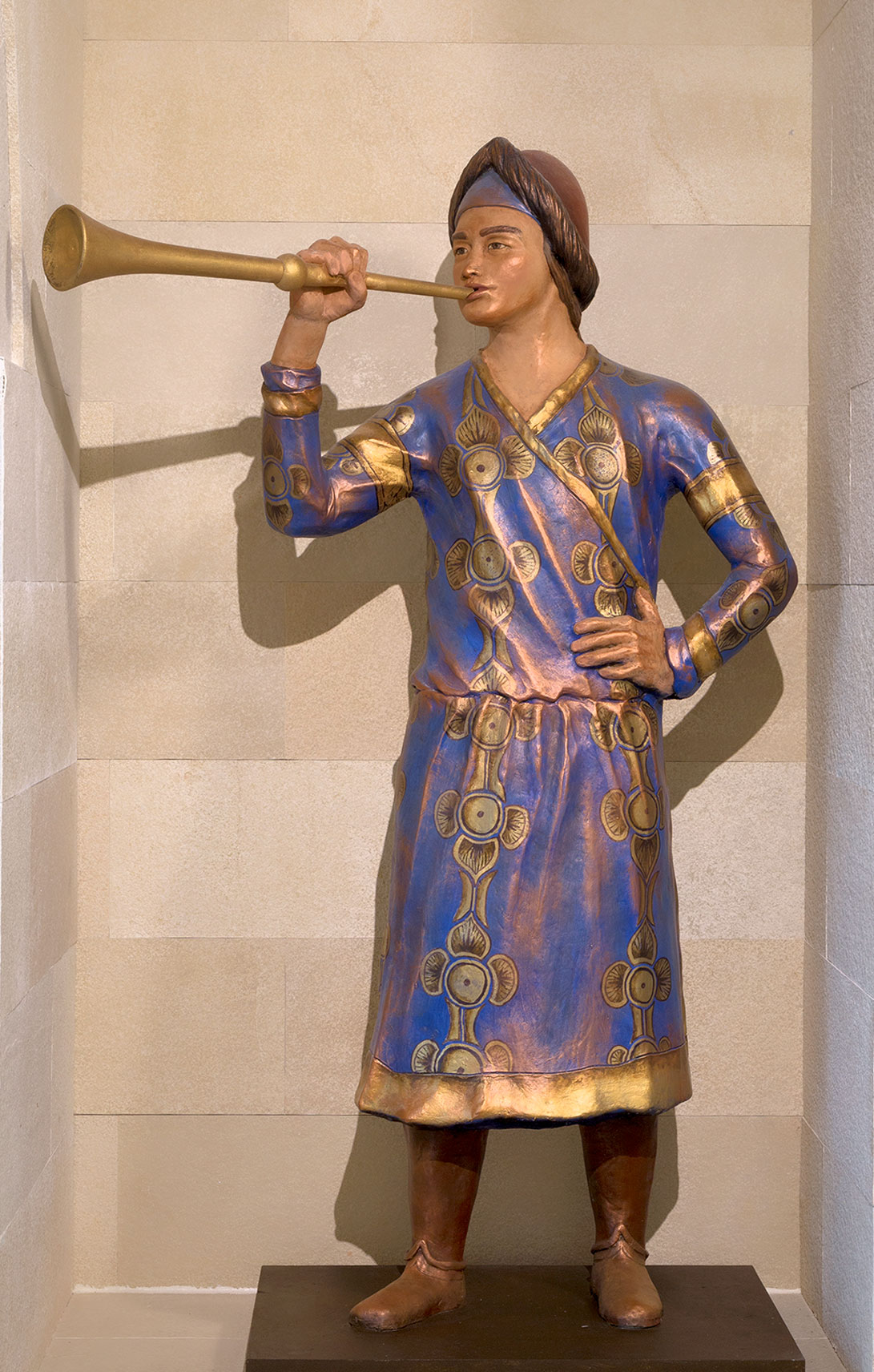
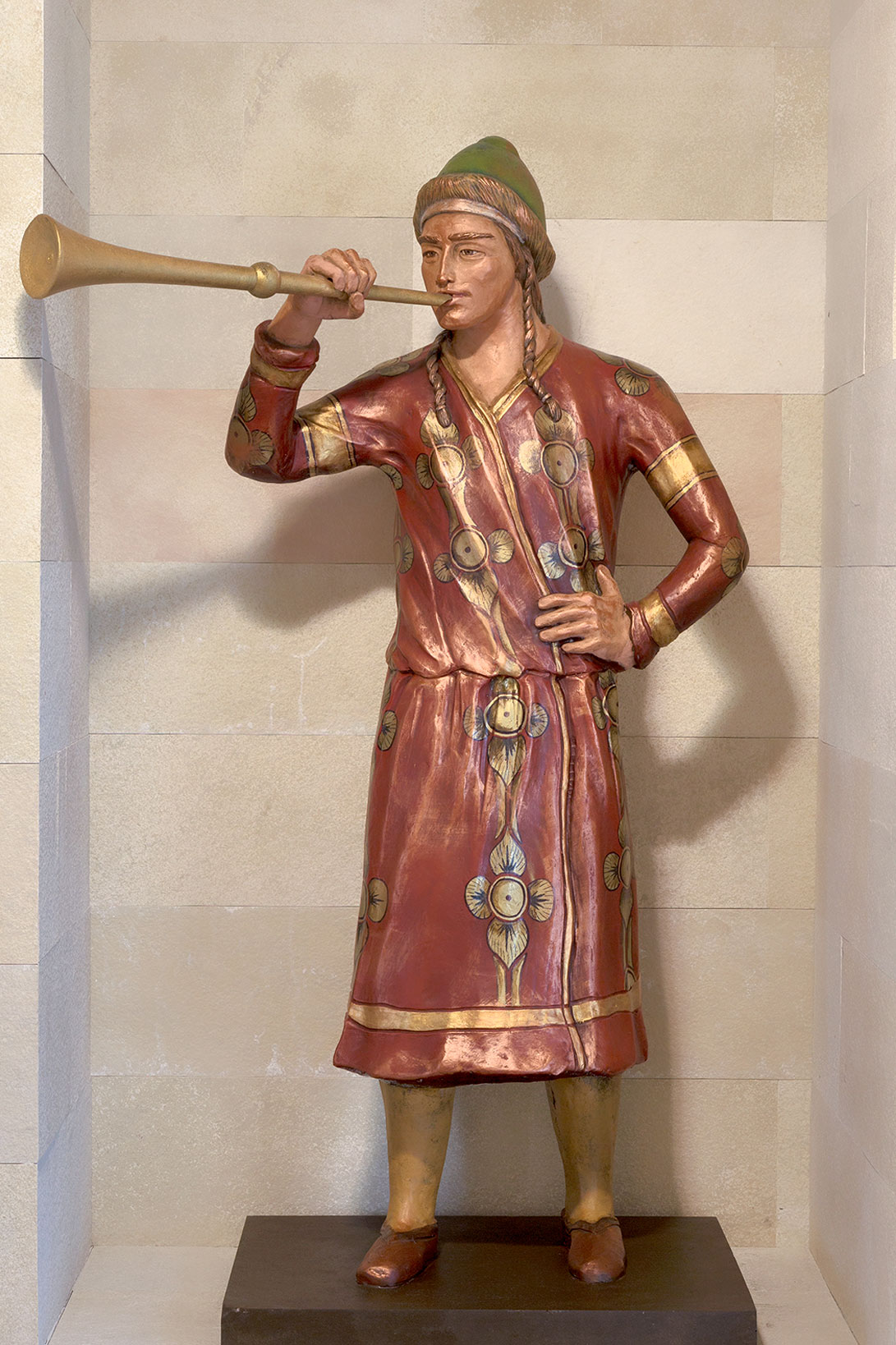
These models that depict the court musicians of the period were made based on the musicians on Jazari’s water clock. Musicians held a very important place in court life both for the important announcements and in social gatherings.
Book of Wonders
813 years ago, in 1206, an amazing book of engineering was written at Artuqid Court in Diyarbakir. The author was the court’s chief engineer Abu l- ‘Izz al-Jazari. Jazari’s book, with its complete title as Kitâb al-câmi‘ beyn al-‘ilm ve al-‘amel an-nâfi’ fi sınâa’ti’l-hiyel (it’s titled as Kitab fi ma'rifat al-hiyal al-handasiya in wikipedia.org), is shortly known as Kitab al-Hiyal. Kitab al-Hiyal was written in Arabic, which was the language of science in that area and the era. In the book, the designs of 50 devices and machines were described and explained, witht he support of some miniatures. Essentially, Jazari had created these devices to be used in the court, but then he penned his book upon the suggestion of the sultan so that these creations could be left for the future generations. Therefore, the devices weren’t just imaginary, but the book is an engineering book that provides the descriptions of devices and machines that were realized.
You will find 50 devices and machines as water clocks, robots, blood measuring devices, candle clocks, locks and doors, water jets, and irrigation systems. Despite the original version of the book, which was penned by him, didn’t survive until today, 17 hand-written copies of the book – with little differences among them, 14 in Arabic, 2 in Persian, and 1 in Ottoman – are kept at the various museums and libraries all around the world.
